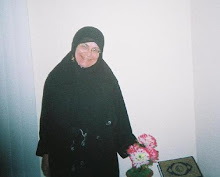Illegal Child Labor in the United States



Reported by: David Foster and Farrell Kramer
Fifty-nine years after Congress outlawed child labor in its most onerous forms, underage children still toil in fields and factories scattered across America.
The poorest and most vulnerable among them start working before other children start kindergarten. Many earn wages below the legal minimum, often in exhausting, or even hazardous, jobs.
These children live in a world apart from most Americans, hidden from consumers and even the companies that buy the products of their labor. Yet those products can sometimes be as close as the local mall or the corner grocery.
In the past five months, The Associated Press found 165 children working illegally in 16 states, from the chili fields of New Mexico to the sweatshops of New York City.
They are children such as Angel Oliveras, 4, who stumbled between chili pepper plants as tall as his chin in New Mexico's fall harvest. Children such as Vielesee Cassell, 13, who spent the summer folding and bagging dresses in a Texas sweatshop. Children such as Bruce Lawrence, at 8 already a three-year veteran of Florida's bean fields.
The AP was able to follow the work products of 50 children to more than two dozen companies including Campbell Soup Co., Chi-Chi's Mexican restaurants, ConAgra, Costco, H.J. Heinz, Newman's Own, J.C. Penney, Pillsbury, Sears and Wal-Mart.
All the companies that responded condemned illegal child labor. Many launched investigations when told of suppliers employing underage children.
``If they are, that's against the law and they're gone - they don't supply to Campbell Soup Co.,'' said spokesman Kevin Lowery.
Although the number of children traced to any one company was small, there are uncounted thousands of boys and girls like Angel, Vielesee and Bruce. No one knows just how many because no one, the federal government included, has tried to count them all.
To make an estimate, the AP had Rutgers University labor economist Douglas L. Kruse analyze monthly census surveys and other workplace and population data collected by the federal government.
His study estimates that 290,200 children were employed unlawfully last year. Some were older teens working a few too many hours in after-school jobs. But also among them were 59,600 children under age 14 and 13,100 who worked in garment sweatshops, defined as factories with repeated labor violations.
Other estimates:
Close to 4 percent of all 12- to 17-year-olds working in any given week were employed illegally.
Employers saved $155 million in wages last year by hiring underage children instead of legal workers.
Kruse's study could not account for all children who work illegally because available data are limited. For example, census-takers, like labor enforcement agents, have trouble finding the very kids who are among the most easily exploited: children of migrant workers, illegal immigrants and the very young.
Even so, U.S. Labor Secretary Alexis Herman called the study more comprehensive than anything her department had produced.
She said the AP's numbers, and the young faces behind them, highlight a home-grown version of what the Clinton administration and corporate leaders have addressed largely as a foreign problem.
``I don't think that we can lead from a position of integrity and be a world leader if our own domestic house is not in order,'' she said.
Jim Sinegal, president of Costco Wholesale Corp., said his company has monitored overseas suppliers for years to avoid products made with child labor.
However, the company acknowledged buying cherries from a packing plant in Washington state where Flor Trujillo, 15, and six other child workers under 16 were sickened by carbon monoxide last July. Children under 16 are prohibited by federal law from working in such plants.
``We obviously have to take a look a little closer to home,'' Sinegal said.
Look to a bustling street in New York City's borough of Queens, where Koon-yu Chow, 15, was found stitching dresses at a garment factory sewing machine last summer. Dresses were being made for Betsy's Things, a label sold at Sears, until state labor investigators inspected the place and Betsy's Things took its business elsewhere.
Walk into Grayson Sewing in Sherman, Texas. There, Vielesee was one of seven children federal investigators found folding and bagging dresses up to 12 hours a day. All seven were under 14; the youngest was 9. J.C. Penney acknowledged making two purchases of garments from Grayson, a company investigators called a sweatshop.
Rise before dawn to join Angel and six other children under 12 in a New Mexico field.
``Hurry up, son,'' Angel's mother called. ``It's time to pick.''
The 4-year-old pushed back an adult-sized baseball cap from his eyes and turned to the work that would occupy him for the next eight hours on this October day: yanking chilies from the plants and dropping them with hollow thumps into his mother's bucket.
Follow the chilies, and the trail leads to Texas, to a processor that makes Old El Paso salsa for Pillsbury. The processor also supplies a California plant operated by Cantisano Foods, which makes salsa for the Newman's Own label.
Told of this by the AP, actor Paul Newman, founder of the company, flew to New Mexico last weekend to investigate. Cantisano said that, at Newman's request, it had stopped doing business with the Texas supplier.
If his company can't ensure that ingredients are produced without child labor, Newman said, ``we'll have to eliminate the product.
''Newman said the situation is ironic, considering that his company gave $9 million to charities this year, much of it to help children.
``Even though we weren't aware of these infractions, I suppose we should have been,'' he said. In a later interview, he added, ``What you found is probably significant.''
A century ago, more than 2 million children labored in America's factories, fields and mines. The wisdom of the day regarded them as miniature adults, each one a potential Horatio Alger hero who could rise to riches through hard work and perseverance.
In the early 1900s, however, public opinion moved toward a dimmer view of child labor: Too much work, too young, robs children of an education and condemns them to a lifetime of poverty and missed opportunity.
In 1938, Congress declared an end to ``oppressive child labor,'' the most onerous forms of children's work, by enacting the Fair Labor Standards Act.
Since its passage, child labor has declined, although it is far from eradicated. Kruse's study, which began with 1970s figures, shows the number of illegal child workers dropping until recently, but leveling off since 1995.
The 1938 law set age minimums designed to ease children into the adult world of work. Those minimums remain at the heart of federal child labor law:
Children must wait until age 16 to work in factories or during school hours.
Children under 14 are barred from most jobs except farming.
Children under 12 are banned from most farming jobs but can work on their parents' farm or on a small farm exempt from federal minimum-wage laws.
Children under 18, or under 16 on farms, are barred from a list of jobs deemed hazardous.
Responsibility extends beyond the child's employer. Under the federal law, the taint of illegal child labor clings to a product from the workplace to the final packager or distributor.
Toss a bucket of cucumbers picked on an Ohio farm by 10-year-old Laura Mares into a truckload harvested by adults, and the entire load becomes ``hot goods.'' So do any pickles or relish made from it.
Even with such strong laws, America's youngest workers remain among us. Drive past the right farm at the right time of year, walk down the right street, and there they are. In New York City, for example, young teens in work boots wait on a busy Brooklyn boulevard, peddling their labor to construction bosses who cruise by in vans.
Despite agriculture's more relaxed labor standards, it was on farms that the AP most often found illegal child labor, including the most extreme cases: the youngest workers toiling the longest hours for the least pay.
Reporters saw 104 children working illegally in agriculture in the past five months - nearly three times the 35 that U.S. Labor Department inspectors witnessed nationwide last year, according to the department's computer records.
Underage children picked cucumbers in Michigan, green peppers in Tennessee, and apples in upstate New York. Their grape-cutting knives flashed in the sunny vineyards of California, and their head lamps bobbed in the gloomy mushroom sheds of Pennsylvania. They packed peaches into crates in Illinois and hoed sorghum in Lubbock, Texas.
On a simmering July day near Bowling Green, Ohio, Pasqual Mares looked sadly at his 10-year-old daughter Laura, her back bent over a row of cucumbers. In a full week of harvest work, Mares said, he and his wife and their two working children had earned just $120 - far below the normal minimum wage.
``Someday, I want my children to be treated like human beings, not like animals,'' he said. ``It's not right that the children work. But we have to do it.''
In a New Mexico field, Maria Perez watched her 10-year-old son Victor pick chilies. ``I like him to work in the fields with me because I want him to learn that this work is hard, hot and laborious,'' she said. ``I want him to hate this, to stay in school and to study hard so he doesn't have to do this work.''
Victor was one of 35 children under age 12 seen picking chilies in the fields of New Mexico and west Texas. Laura Mares was among 34 kids under 12 spotted in Ohio's cucumber rows.
In the bean fields near Homestead, Fla., the Lawrence kids - Bruce, 8, Angie, 10, and Benjamin, 11 - were among eight children under 12 picking beans one November morning.
``No kids in the field - especially when we've got reporters here,'' a crew boss at one Homestead field yelled out. Surprised parents said it was the first they'd been told that children weren't allowed.
Some employers on whose property the AP saw underage children working denied breaking the law, even when presented with photographs of the activity. Others blamed the kids and their parents.
``We tell them that we don't want children in the fields,'' said Tim Reynolds, whose family runs the farm where Laura worked. ``But you know, migrant laborers want their kids out there. They get more produce picked.''
Far from being anomalies, those young faces are windows into a larger, seldom-seen population of child workers, say those most familiar with child labor, including migrant-education workers, union organizers, priests and school teachers.
``They are in the dark alleys of the big cities,'' or ``down a dirt road,'' said Linda F. Golodner, co-chairwoman of the Washington-based Child Labor Coalition.
Some Wal-Mart ``supercenters'' sell Sugar Lake Farms chicken nuggets and patties produced by Braselton Poultry in Braselton, Ga. That's where David Osorio, 15, used a fake ID saying he was 21 to get a job cutting up chickens instead of going to school. Asked about David last month, Braselton found that his ID was fake and fired him.
H.J. Heinz buys some of its chicken from Chestertown Foods, according to Chestertown plant manager Jack Laird. Filomena Simon Perez, 15, worked cutting up chickens at the Maryland processing plant, which also sells to Campbell. She was one of six undocumented workers under 16 found when U.S. immigration agents raided Chestertown in September.
ConAgra, which makes Rosarita salsa, acknowledged buying chili peppers from a distributor supplied by a New Mexico farm where eight children, ages 3 to 11, were seen working in September. Chi-Chi's, a Mexican restaurant chain owned by Family Restaurants, said it gets chilies from the same source.
Campbell confirmed it buys mushrooms from a farm in Chester County, Pa., which this fall employed Jose Ortiz, age 14. While other kids his age were in school, Jose picked mushrooms eight hours a day in a dark building that smelled of manure.
For some companies, this was not their first alert to child labor.
The U.S. Labor Department says Grayson Sewing, the J.C. Penney supplier, has been the subject of three workplace investigations since 1993.
Ohio cucumber growers supplying Campbell were sued in 1993 by migrant workers who claimed the farmers concealed child laborers by assigning their earnings to adults. The suit was settled for $200,000.
But the products they produce can make their way to the store down the street.
At Heinz, purchasing agent Ronald Brooks said the company has worked for years to get farm workers' kids out of the fields and into decent housing or day care.
``We take the issue very seriously,'' Brooks said. ``It's not totally new and foreign to us.''
Some companies, including Wal-Mart, Cantisano, Sears and Chi-Chi's, said they would never knowingly buy from anyone employing children illegally.
``Any U.S. grower found to be in violation of U.S. labor laws will have its contract terminated,'' Chi-Chi's parent company, Family Restaurants, said in a written statement.
Several companies, including J.C. Penney and H.J. Heinz, said they have begun investigations of their suppliers.
ConAgra's Hunt-Wesson unit, which makes Rosarita salsa, contacted its chili supplier and was ``very comfortable that they were addressing any issue that might be there,'' said Hunt-Wesson spokesman Kay Carpenter.
Pillsbury checked with its supplier, said company spokesman Rob Longendyke, and was told children had been in the New Mexico chili fields with their families but were not working.
``If you have evidence otherwise,'' he said, ``we will take action.''


Labels: Child Labor, End of Time, United States














0 Comments:
Post a Comment
<< Home